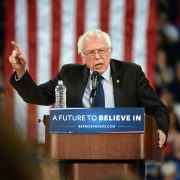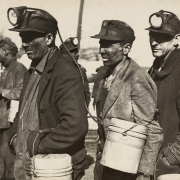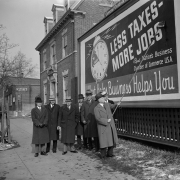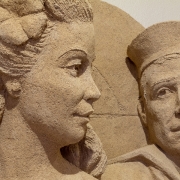I can still remember learning about the Great Depression during while studying American History during my undergrad. My professor may as well have been standing on a soapbox when she declared to our class that Franklin D. Roosevelt was this nation’s greatest president, and anyone who said anything to the contrary was wrong. There was no room for debate and certainly no room for further discussion. But that didn’t stop her from continuing this rhetoric throughout the entire Great Depression unit.
FDR’s standing as the nation’s greatest president may be up for debate, but the opinions of my professor are most certainly important because they reflect a deep flaw in our nation’s understanding of the Great Depression. There is this belief that by intervening and implementing the New Deal, FDR saved Americans from the depths of the Great Depression. But in fact, the opposite was true. FDR’s New Deal actually prolonged the Depression and made it far worse than it otherwise would have been.
As discussed previously, booms and busts occur in the market when governments meddle in the economy as they do. If left alone, the market will correct itself and the economy can be prosperous once again. But as soon as the government steps in, correction is inhibited and recessions and depressions prolonged. This is precisely what happened when the New Deal went into effect during the Great Depression.
The Agricultural Adjustment Act
Everyone has been taught that during the depression, many Americans were starving and unable to feed themselves and their families. But what most do not fully understand is that farmers actually had an abundance of crops. However, thanks to the Agricultural Adjustment Act (AAA), which was part of the new deal, farmers were actually required and even compensated to destroy both crops and livestock. If this sounds like an absurd thing to do while your nation starves, that is because it is.
As part of the AAA, a new tax on agricultural processors was levied and the funds generated from the new tax were then used to implement the destruction of crops and farm animals. Of course, the larger commercial farmers really benefited from this, as they could more easily afford to lose so much of their inventory. But for smaller farms, this destruction sealed their financial fates.
As the Cato Institute explains in Tough Questions for Defenders of the New Deal:
“FDR promoted higher food prices by paying farmers to plow under some 10 million acres of crops and slaughter and discard some six million farm animals…This policy and subsequent programs to pay farmers for not producing victimized the 100 million Americans who were consumers.”
Tax and Spend
One of the most egregious aspects of the New Deal was the National Industrial Recovery Act which established the National Industrial Administration (NRA). The NRA essentially commandeered certain private industries and put them under the control of the NRA. But to add insult to injury, the industries that were taken over were forced to fund the NRA with revenue collected from a series of new taxes they now had to pay.
Needless to say, this did not bode well for businesses that were already struggling to stay afloat. It is even estimated that the NRA increased the cost of operating a business by 40 percent. It is a shock that any businesses were able to survive the tax burdens placed on them under New Deal policies. In addition to raising taxes on businesses, the income tax was also raised. And the money being generated was not exactly put to good use.
Under the new deal, jobs were created for the sake of creating a job and not out of actual market demand. Under public relief programs, actors were even hired to entertain librarians while they cataloged books. While this may have been appreciated by the librarians, providing entertainment is not the job of the federal government. Nor was it a job needed at the time.
In additional to useless jobs, the New Deal ushered in an era of worthless infrastructure as well. After the Public Works Administration was instituted, more than 77,000 bridges and 116,000 buildings were built. And while leftists love to use this point in particular, to prove just how beneficial the New Deal was, there was no actual need for this new infrastructure, making all this new architecture virtually useless. But since the government kept taxing the people, they had money to spend, even if that spending was only serving to prolong the Great Depression.
Freedom from the New Deal
It wasn’t until 1935 that the economy finally got some relief from FDR’s New Deal policies. In 1935, the Supreme Court ruled that the NRA was unconstitutional in the case of Schechter Poultry Corp. v. United States. In 1936, the Supreme Court also ruled that the AAA was unconstitutional in the case of United States v. Butler. Eventually, other programs started under the New Deal were also struck down and they disappeared.
It should surprise no one, then, that in the years following the Supreme Court’s decisions, the economy began to rebound. By the end of 1935, the national unemployment rates had already begun to fall. Of course, this was not the end of the government’s interference with the economy.
The fact remains that had the government taken a hands-off approach to the economy, the market would have corrected itself in a shorter amount of time. But as a result of this interference, millions of American families and businesses suffered longer than needed. Of course, even though the Supreme Court had struck down the NRA and the AAA, the federal government had still not learned its lesson. In fact, in 1937, the Wagner Act would once again cause unemployment to rise.













